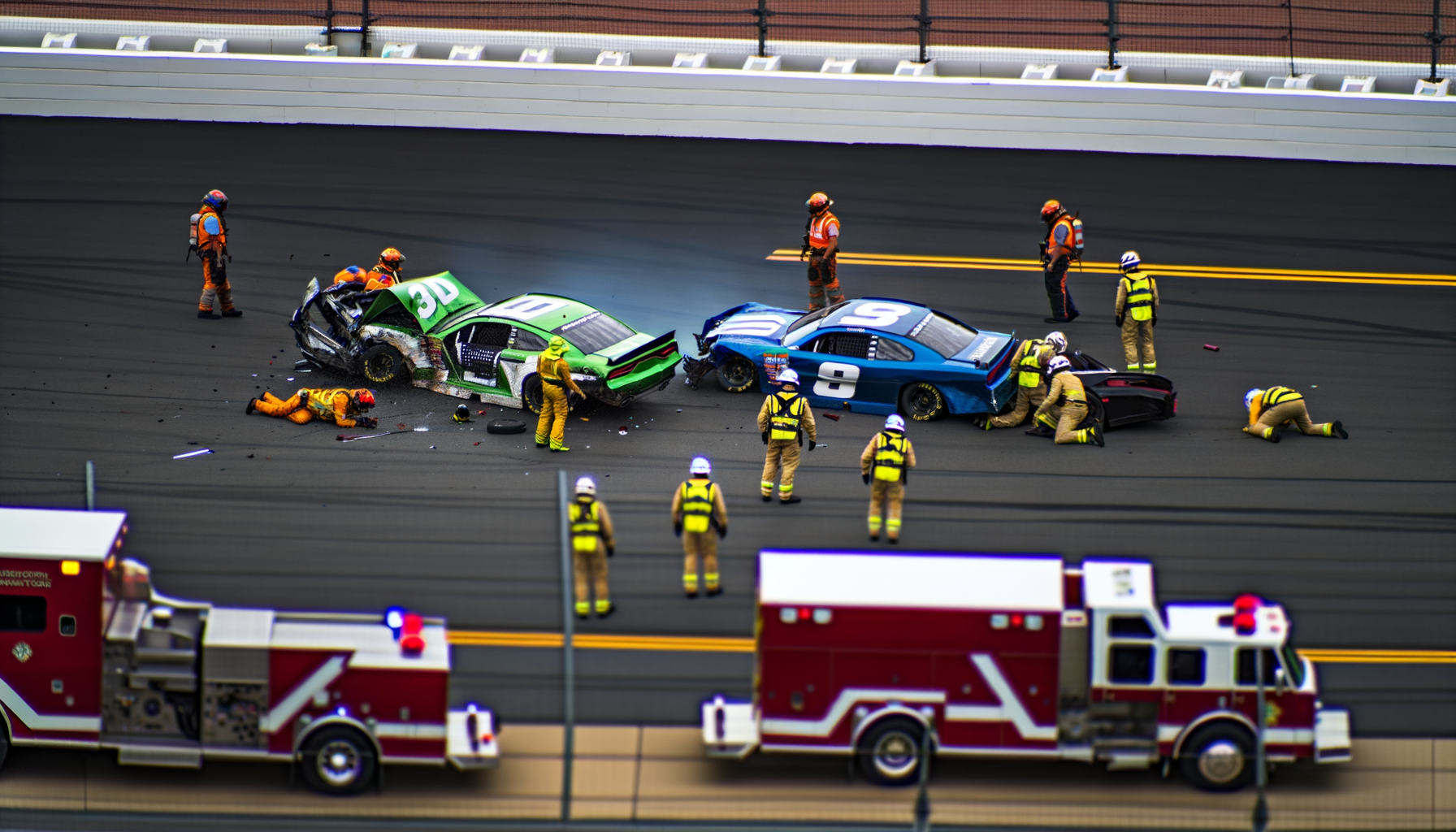What Caused The Catastrophic Crash Between William Byron And Ty Dillon?
Explore the key factors that led to the catastrophic crash between William Byron and Ty Dillon. Detailed analysis and insights on racing incidents.

By Editorial
Introduction To The Crash Between William Byron And Ty Dillon
The recent catastrophic crash involving NASCAR drivers William Byron and Ty Dillon has sparked intense discussion among fans and experts alike. Understanding the factors that led to this incident is crucial, not only for safety improvements but also for appreciating the complexities of high-speed racing. In this article, we break down the key elements that contributed to the crash and what lessons can be learned moving forward.
Track Conditions And Their Impact On Racing Safety
One of the primary factors contributing to racing incidents is the condition of the track itself. On the day of the crash, the surface was noted to be particularly slick due to a combination of weather and rubber buildup from previous races. Such conditions reduce tyre grip, making it harder for drivers to maintain control at high speeds.
William Byron, known for his aggressive yet calculated driving style, was navigating a tricky section of the track when Ty Dillon's car unexpectedly made contact with his rear quarter panel. This contact, combined with the slick track, caused Byron to lose control, leading to the catastrophic crash.
The Role Of Weather And Track Temperature
Ambient temperature plays a significant role in tyre performance. Cooler track temperatures can cause tyres to cool rapidly, reducing their grip. Reports indicated that the temperature was dropping during the race, which may have contributed to the loss of traction seen during the crash.
Driver Behaviour And Race Dynamics
In high-stakes races, driver behaviour is a critical factor. Both Byron and Dillon were competing fiercely, each aiming for a top position. This increased pressure often leads drivers to take more risks, including tighter overtakes or defensive moves.
Ty Dillon’s attempt to overtake Byron in a narrow section of the track was risky, and unfortunately, the timing and positioning resulted in contact. This incident highlights how split-second decisions can have significant consequences in motorsport.
Communication Between Drivers And Spotters
Effective communication is vital to avoid collisions. Spotters provide drivers with crucial information about surrounding cars and track conditions. In this case, it remains unclear whether communication lapses contributed to the crash. However, improving communication protocols could be a vital step in preventing similar incidents.
Technical Factors: Vehicle Setup And Performance
Another important angle is the technical setup of the cars. Motorsport teams meticulously tune suspension, aerodynamics, and tyre pressures to maximise performance. Slight deviations or mechanical issues can drastically affect car handling, especially in close racing.
Investigations revealed that Ty Dillon’s car may have had a slightly different setup prioritising straight-line speed rather than cornering stability, which possibly contributed to the loss of control during the manoeuvre. Understanding these nuances helps explain why certain collisions occur despite driver skill.
Historical Context Of Similar Crashes In NASCAR
Crashes involving close-contact between drivers are unfortunately common in NASCAR. The 2017 Talladega crash between Dale Earnhardt Jr. and Jimmie Johnson is a notable example where similar factors—track conditions, aggressive driving, and vehicle setup—combined to cause a dramatic incident.
Analysing past crashes helps NASCAR officials and teams implement safety measures and rule changes. For instance, improvements in car design and track safety barriers have been introduced following such incidents to protect drivers better.
Lessons Learned And Future Safety Measures
The crash between William Byron and Ty Dillon serves as a reminder of the inherent risks in motorsport. Teams and governing bodies must continue to prioritise safety through:
- Enhanced driver communication systems
- Improved track maintenance and real-time surface monitoring
- Optimised vehicle setups balancing speed and control
- Ongoing driver education on risk management
Fans can also engage with ongoing discussions on race safety, such as those highlighted in How The BBC Protects Your Data In Sport Polls And Quizzes, which touches on the importance of data transparency and safety in sport.
Conclusion: Understanding The Complexity Behind Racing Crashes
The catastrophic crash between William Byron and Ty Dillon was not the result of a single cause but rather a complex interplay of track conditions, driver decisions, vehicle setups, and race dynamics. By analysing these factors, the racing community can work towards safer competitions.
For those interested in broader sports insights, exploring articles like Manchester United’s goalkeeper dilemma and summer transfer insights offers a glimpse into the tactical complexities across different sports.
Continued attention to detail, technology, and communication will be paramount in reducing the risk of such crashes in the future, ensuring the thrill of motorsport is matched by the highest safety standards.
Related topics
Editorial
Sports expert at SportsScoop
Specialist in sports analysis and journalism
Related articles
Want to read more?
Explore our comprehensive collection of sports articles and analysis, or contact us for more information.



